Raspberry Pi Pwm Output

Wiringpi And Pulse Width Modulation With Raspberry Pi

Gpio Pwm For Raspberry Pi H Bridge Dc Motor Control Bluetin Io

A Servo Library In C For Raspberry Pi 3 Part 1 Implementing Pwm Jeremy Lindsay

Control 12v Fan With Separate Pwm Pin Doing It Right Will It Kill It Raspberry Pi Forums
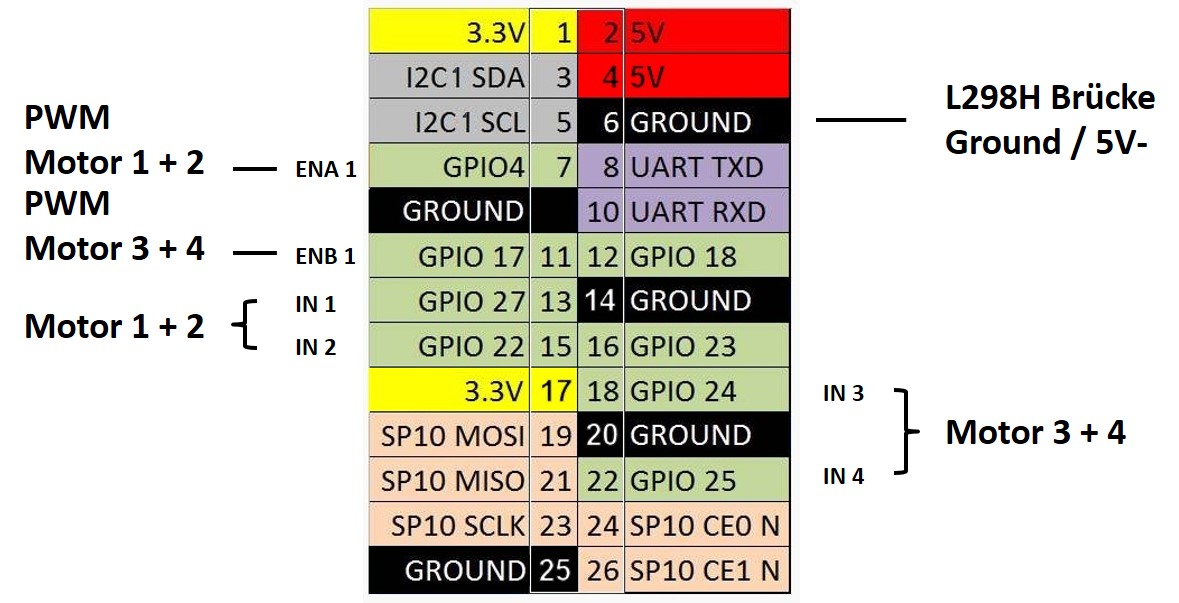
Raspberry Pi Wifi Radio Controlled Rc Vehicle Robot Programing Roboter Planen Bauen Programmieren

Raspberry Pi Pwm Tutorial
PWM outputs 2 pins can be programmed to output PWM pulses PWM is useful when you want to dim a LED or make a poor man’s Digital to Analog Converter (DAC) On the Raspberry Pi’s with the 40 pin connector, 28 of the pins are available as GPIO.

Raspberry pi pwm output. I assumed I was using the wrong pin number at first I found this post Raspberry pi Software Driven PWM using C and I used the table offered in one of the answers The pin I'm using is physical pin 11, the 6th pin up from the square pin 1, aka GPIO17. Please support me on Patreon https//wwwpatreoncom/roelvandepaarWith thanks & praise to God, a. For PWM, the Pi's PWM output is by default not a typical markspace waveform, but a balanced waveform, so it may not be what you're after certianly the "frequency" becomes somewhat interesting to calculate, however you can put it into markspace ratio mode then its more predictable, but it's still driven off the same 192MHz clock as above.
General Purpose Input/Output is what GPIO stands for, and describes the jobs of the pins on Raspberry Pis perfectly They are very similar to Arduino pin ports as they can be configured to either read inputs or write outputs These pins let your Pi interact with different components such as buttons, potentiometers, and buzzers. It stuttered all over. WiringPi includes a softwaredriven PWM handler capable of outputting a PWM signal on any of the Raspberry Pi’s GPIO pins There are some limitations To maintain a low CPU usage, the minimum pulse width is 100μS That combined with the default suggested range of 100 gives a PWM frequency of 100Hz.
Raspberry Pi Output Accurate, Detailed PWM signalHelpful?. The Raspberry Pi Pico is a radical change from previous Pis, because it’s not a Linux computer, but a a microcontroller board like Arduino The biggest selling points of the Raspberry Pi Pico. I recently had the need to generate analog voltages from the Raspberry PI, which has rich GPIO digital outputs but no analog outputs I looked into the RPiGPIO project which can create PWM (which I wanted to smooth using a low pass filter to create the analog voltage), but its output on the oscilloscope looked terrible!.
The Raspberry Pi Pico is a radical change from previous Pis, because it’s not a Linux computer, but a a microcontroller board like Arduino The biggest selling points of the Raspberry Pi Pico. Result of Raspberry Pi Automatic Fans Using L298n PWM In our case, Our Raspberry Pi runs a motioneye server, a SMB Server, some python scripts, and occasionally some media on VLC/Kodi Our Temperature before average on Room Temperature 40 °C Idle 60°C. A single LED will light up to show the input signal and all others will be off.
Our Raspberry Pi 010V Analog Output Product If you are looking for a lowcost highaccuracy industrial Raspberry Pi 010V Analog Output Boards to interface with your Raspberry Pi or any other single board computer, Linux computer, Windows computer In that case this is the ideal product for you This 010V DAC output board comes with on board regulated 5V power supply and has 12 bit resolution. Read More Sudo’ed Android 711 Reviewed On Raspberry Pi 3 !. PWM stands for ‘Pulse Width Modulation’ PWM is a method used for getting variable voltage out of constant power supply We will generate PWM signal from Raspberry PI and demonstrate the PWM by varying the Brightness of a LED, connected to Pi Pulse Width Modulation We have previously talked about PWM many times in Pulse width Modulation with ATmega32 , PWM with Arduino Uno, PWM with 555 timer IC and PWM with Arduino Due.
In raspberry Pi 3, we have Pin # 12 and Pin # 32 as PWM Pins but I have tried different I/O Pins and this PWM commands works quite fine on all of them P Anyways, I am going to use Pin # 12 of pi 3 so change this value from 11 to 12. Because the output pins on the Raspberry Pi output a max of 33V, we’ll connect pin 6 (high) to 33V, and pin 4 (low) to ground *Note that V most be at least 15V greater than the high divider 33V gives us 17V of headroom from our 5V supply voltage* Mode Select This pin sets the mode that our LED bar graph will operate as Left floating (unconnected) and our bar graph will be in dot display mode;. The Raspberry Pi has 40 GPIO pins that connect to sensors, lights, motors and other devices Here's a map and detailed explanation of what each does, including on the Pi 4.
Raspberry Pi (RPi), as an embedded computer, is capable of digital input, digital output, pulse width modulation (PWM), and the implementation of several serial communication protocols (such as UART/USART, I2C, and SPI) In this tutorial, we’ll cover analog output by using PWM with RPi Later, we will use PWM feature of Raspberry Pi to blink and fade an LED PWM. The led pin is setup as the output pwm = GPIO PWM (led_pin, 100) The PWM function is initialized that is used to toggle the brightness of the led The frequency of the signals is taken as 100Hz pwm start (0) Next, the PWM signal is initialized to zero in the beginning while 1 A while loop is executed for an infinite time try for x in range (100) pwm. I assumed I was using the wrong pin number at first I found this post Raspberry pi Software Driven PWM using C and I used the table offered in one of the answers The pin I'm using is physical pin 11, the 6th pin up from the square pin 1, aka GPIO17.
Interesting PWM on Raspberry Pi RP40 mocrocontroller I am supposed to be on other duties this week, but cannot resist pointing you in the direction of the new Raspberry Pi inhouse MCU, the RP40 Much as I want to write chapter and verse, time limits to not allow, so I will restrict myself to pointing out the PWM block, which has some. A powerful feature of the Raspberry Pi is the row of GPIO (generalpurpose input/output) pins along the top edge of the board A 40pin GPIO header is found on all current Raspberry Pi boards (unpopulated on Pi Zero and Pi Zero W) Prior to the Pi 1 Model B (14), boards comprised a shorter 26pin header. MyPi Raspberry Pi PCM Audio Out To enable the PCM audio output add the below lines to /boot/configtxt # Enable audio (loads snd_bcm25 in OS) dtparam=audio=on dtoverlay=pwm2chan,pin=40, func=4,pin2=45,func2=4 You may find you can improve the audio quality by adding the below line in addition to the above.
PWM can be performed in a number of ways on the Raspberry Pi Inbuilt hardware;. Both main GPIO systems for Python on the Raspberry Pi have been getting some enhancements RPiGPIO, now at version 052a, has interrupts and threaded callback capability PWM is pulsewidth modulation Put simply, this is a signal that is switched between on and off, usually rather quickly 52 pstop() # stop the PWM output GPIO. Interesting PWM on Raspberry Pi RP40 mocrocontroller I am supposed to be on other duties this week, but cannot resist pointing you in the direction of the new Raspberry Pi inhouse MCU, the RP40 Much as I want to write chapter and verse, time limits to not allow, so I will restrict myself to pointing out the PWM block, which has some.
Step 1 Login to your Pi User pi Password raspberry Step 2 Open your configtxt file By command line or SSH type in sudo nano /boot/configtxt Step 3 Paste in the code anywhere in the file dtoverlay=pwm2chan,pin=18,func=2,pin2=13,func2=4 Step 4 Save the file. The Raspberry Pi Pico is a radical change from previous Pis, because it’s not a Linux computer, but a a microcontroller board like Arduino The biggest selling points of the Raspberry Pi Pico. Using the Raspberry Pi hardware PWM timers 09 Apr 17 PWM devices will show up, but you won’t be able to get an output There are workarounds, such as playing an audio file before using PWM since audio also uses the PWM clocks and will enable the source clock But that’s not very convenient.
I recently had the need to generate analog voltages from the Raspberry PI, which has rich GPIO digital outputs but no analog outputs I looked into the RPiGPIO project which can create PWM (which I wanted to smooth using a low pass filter to create the analog voltage), but its output on the oscilloscope looked terrible!. This lesson shows you how to use PWM output on the GPIO pins on the Raspberry Pi to simulate analog voltage output We demonstrate this by creating a dimmabl. Through this article, Controlling the brightness of an LED with Raspberry Pi using PWM, one would learn how the brightness of an led can be controlled using the PWM signal Here #PWM stands for Pulse Width Modulation This is a technique that can be used to control the speed of a #dc motor or the #brightness of an led.
Save time and download the Python Servo code for Raspberry Pi. I assumed I was using the wrong pin number at first I found this post Raspberry pi Software Driven PWM using C and I used the table offered in one of the answers The pin I'm using is physical pin 11, the 6th pin up from the square pin 1, aka GPIO17. You can use any GPIO port p = GPIOPWM(25, 50) # create an object p for PWM on port 25 at 50 Hertz # you can have more than one of these, but they need # different names for each port # eg p1, p2, motor, servo1 etc pstart(50) # start the PWM on 50 percent duty cycle # duty cycle value can be 00 to 1000%, floats are OK pChangeDutyCycle(90) # change the duty cycle to 90% pChangeFrequency(100) # change the frequency to 100 Hz (floats also work) # eg 1005, 52 pstop() # stop the PWM.
Interesting PWM on Raspberry Pi RP40 mocrocontroller I am supposed to be on other duties this week, but cannot resist pointing you in the direction of the new Raspberry Pi inhouse MCU, the RP40 Much as I want to write chapter and verse, time limits to not allow, so I will restrict myself to pointing out the PWM block, which has some. 09 Apr 17 The Raspberry Pis have two hardware timers capable of generating a PWM signal The README in the RPi kernel overlays directory shows the pins where the PWM timers are accessible Name pwm Info Configures a single PWM channel Legal pin,function combinations for each channel PWM0 12,4 (Alt0) 18,2 (Alt5) 40,4 (Alt0) 52,5 (Alt1) PWM1 13,4 (Alt0) 19,2 (Alt5) 41,4 (Alt0) 45,4 (Alt0) 53,5 (Alt1) NB 1) Pin 18 is the only one available on all platforms, and it is the one. Raspberry Pi 3 (it is not a different thing if the model is different) RGB LED cathode or anode 1 x 100 ohm and 2 x 150 ohm resistors Micro USB cable 25 A, 5 V USB Power Supply (For RPi 3 it requires 25 A at most, but for the older versions 2 A will be enough) SD Card Breadboard Cables or Jumpers > for this case, I would recommend femalemale jumpers.
The Yellow trace is an output value of 25 and the Cyan trace has an output value of 50 Each PWM signal is generated by a separate thread so they all run independantly of each other The traces are surprisingly steady though Finally, one of my infamous videos Software PWM on the Raspberry Pi YouTube. Now, I take a look at how to drive a typical HBridge module, connected to a Raspberry, with GPIO PWM GPIO PWM GPIO PWM Output at 10Hz Frequency I admit at this point I do not know how the GPIO PWM is implemented on the Raspberry Pi But I believe the PWM is software driven using a shared clock source and might involve DMA channels. A lot of people uses fan to cool down their Raspberry Pi 4, but the fan’s noise is quiet problem (in a quiet room) In most case pi didn’t need that amount of cooling performance, so we can use PWM (Pulse Width Modulation) to control fan speed and reduce the noise Wiring I use Noctua NF 5V PWM, a 40mm, 5V PWM fan Here’s the wiring.
PWM (Pulse Width Modulation) is a modulation technique for generating an analog signal by using digital source PWM is generally used to control the intensity of LED, speed of DC motor or servo motor. A PWM generator accessory can also be used to add PWMcapable output pins to the Raspberry Pi Another approach being used is doing software PWM on other GPIO capable pins The WiringPi library is an example library that allows for this type of control It uses a realtime scheduler to prioritize the generation of PWM signals by running. Raspberry Pi is a smallsized computer used Linux operating system It is mini size computer used mostly to run larger and smart programs to achieve output quickly Raspberry Pi 4 B (RP4) is the lasted model developed by the company, which has all the required latest wired and wireless communications systems used in most of the smart projects A single Raspberry Pi 4 comes to a QuadCore.
The main idea was to generate a configurable Pulse Width Modulated (PWM) signal out of a Raspberry PI Zero v13 The software solution The first solution was to handle a regular GPIO pin by software in order to alternate one and zeros via a loop. CircuitPython on Linux and Raspberry Pi PWM Outputs & Servos CircuitPython on Linux and Raspberry Pi By lady ada Make hardware and interface with sensors super easy using CircuitPython import time import board import pulseio # Initialize PWM output for the servo (on pin D5) servo = pulseioPWMOut(boardD5, frequency=50) # Create a. WiringPi includes a softwaredriven PWM handler capable of outputting a PWM signal on any of the Raspberry Pi’s GPIO pins There are some limitations To maintain a low CPU usage, the minimum pulse width is 100μS That combined with the default suggested range of 100 gives a PWM frequency of 100Hz.
There are two ways to generate PWM signal from the Raspberry Pi We can either generate PWM through hardware means or software means By generating PWM by hardware means, we will have to utilize the dedicated PWM pins of the Raspberry Pi There are 4 PWM pins on the Raspberry Pi, but each pair of the 4 pins is sharing one PWM resource. The diagram below shows the signal from the PWM pin of the Raspberry Pi Every 1/500 of a second, the PWM output will produce a pulse The length of this pulse controls the amount of energy that the motor gets No pulse at all and the motor will not turn, a short pulse and it will turn slowly If the pulse is active for half the time, then the. Purpose The main idea was to generate a configurable Pulse Width Modulated (PWM) signal out of a Raspberry PI Zero v13 The software solution The first solution was to handle a regular GPIO pin by software in order to alternate one and zeros via a loop.
The Raspberry Pi supports software configurable PWM on all its GPIO pins You can essentially program a GPIO to output a PWM pulse of a varying duty cycle Apart from software PWM, it also provides hardware PWM on GPIO12, 13, 18 and 19 It has 2 separate channels for hardware PWM. Posted in Featured, Raspberry Pi, Slider ged audio, behind the pin, pwm, Raspbery PI Post navigation ← Replace Your Calipers With A Microscope And Image Analysis. Raspberry Pi 3 (it is not a different thing if the model is different) RGB LED cathode or anode 1 x 100 ohm and 2 x 150 ohm resistors Micro USB cable 25 A, 5 V USB Power Supply (For RPi 3 it requires 25 A at most, but for the older versions 2 A will be enough).
Posted in Featured, Raspberry Pi, Slider ged audio, behind the pin, pwm, Raspbery PI Post navigation ← Replace Your Calipers With A Microscope And Image Analysis. Def setAngle(angle) duty = angle / 18 3 GPIOoutput(11, True) pwmChangeDutyCycle(duty) sleep(1) GPIOoutput(11, False) pwmChangeDutyCycle(duty) To set the servo to 35 degrees, you can use the command, setAngle(35) in your program Pretty easy, right?!. The Raspberry Pi PWM The Raspberry Pi™ hardware board supports software pulsewidth modulation (PWM) on all GPIO pins When configured for PWM, each pin outputs a square waveform with variable frequency and duty cycle The minimum PWM output frequency is 10 Hz The maximum PWM output frequency is 8 KHz using writePWMFrequency (mypi, 12, 8000) A duty cycle of 0 means that the waveform is always low.
A Key the source code below into Raspberry Pi’s Text Editor Save it into the Pi folder as pwmledpy B If the Pi is connected to the internet, you can download it from our website as follows Launch the Terminal program (command line interface) Type wget O /home/pi/pwmledpy https//wwwmbtechworkscom/files/pwmledpy. It stuttered all over. Also there are no native PWM on Raspberry Pi PWM are quite useful to control components with a nonbinary command You can fake the PWM from software (ex with WiringPi), but it’s clearly not recommended as it will take a lot of CPU and won’t be really fast.
Along with these functions, all pins are capable of software PWM while GPIO12, GPIO13, GPIO18, GPIO19 are capable of hardware pulsewidth modulation Official 40pin RPi List While the standard pinout for all 40pin Raspberry Pis has remained the same, you can find an updated list of pin functions for the Raspberry Pi 4 at the official raspigpio repository. Feel free to use the gpio program to configure other pins as input or output (PWM is only for special function pins like GPIO18 (WiringPi 1), other PWM pins are occupied by the 35mm audio. The Pi can perform PWM in hardware, but this can only be done on one pin (GPIO18) and when enabled it interferes with the audio jack.
Introduction This is the chapter web page to support the content in Chapter 6 of the book Exploring Raspberry Pi – Interfacing to the Real World with Embedded Linux The summary introduction to the chapter is as follows This chapter integrates the Linux, programming, and electronics groundwork from earlier chapters to show you how to build circuits and write.

Hello Raspberry Pi Python To Generate Pwm On Gpio Of Raspberry Pi
Q Tbn And9gcrts6wavyqkixnh3jeevq 8e70gfspaoah Oxcbnjr Xwyqngd Usqp Cau
Q Tbn And9gcsgbcagw2yaa1 Xzzzx5pyowlg5cneg8qxpmmepwlf4 Wckg5ka Usqp Cau

The Raspberry Pi Pwm Matlab Simulink

5v 4 Pin Pwm Noctua x10 On Raspberry Pi Page 2 Raspberry Pi Forums

No Example For Pwm Issue 433 Dotnet Iot Github

Raspberry Pi Gpio Pin Alternate Functions Dummies

Raspberry Pi Gpio Pwm Pin

Raspberry Pi 3 Pinout Features Specifications Datasheet

Pulse Width Modulation Pwm On The Raspberry Pi With Python Programming

Raspberry Pi 4 Pins Complete Practical Guide The Robotics Back End

Increase Current Capability Of 3 3v Pwm Raspberry Pi Forums

Labview m25 Library For Raspberry Pi Ni Community

Rpi Drive Servo By Pwm Wiringpi C Programming Raspberry Pi Forums
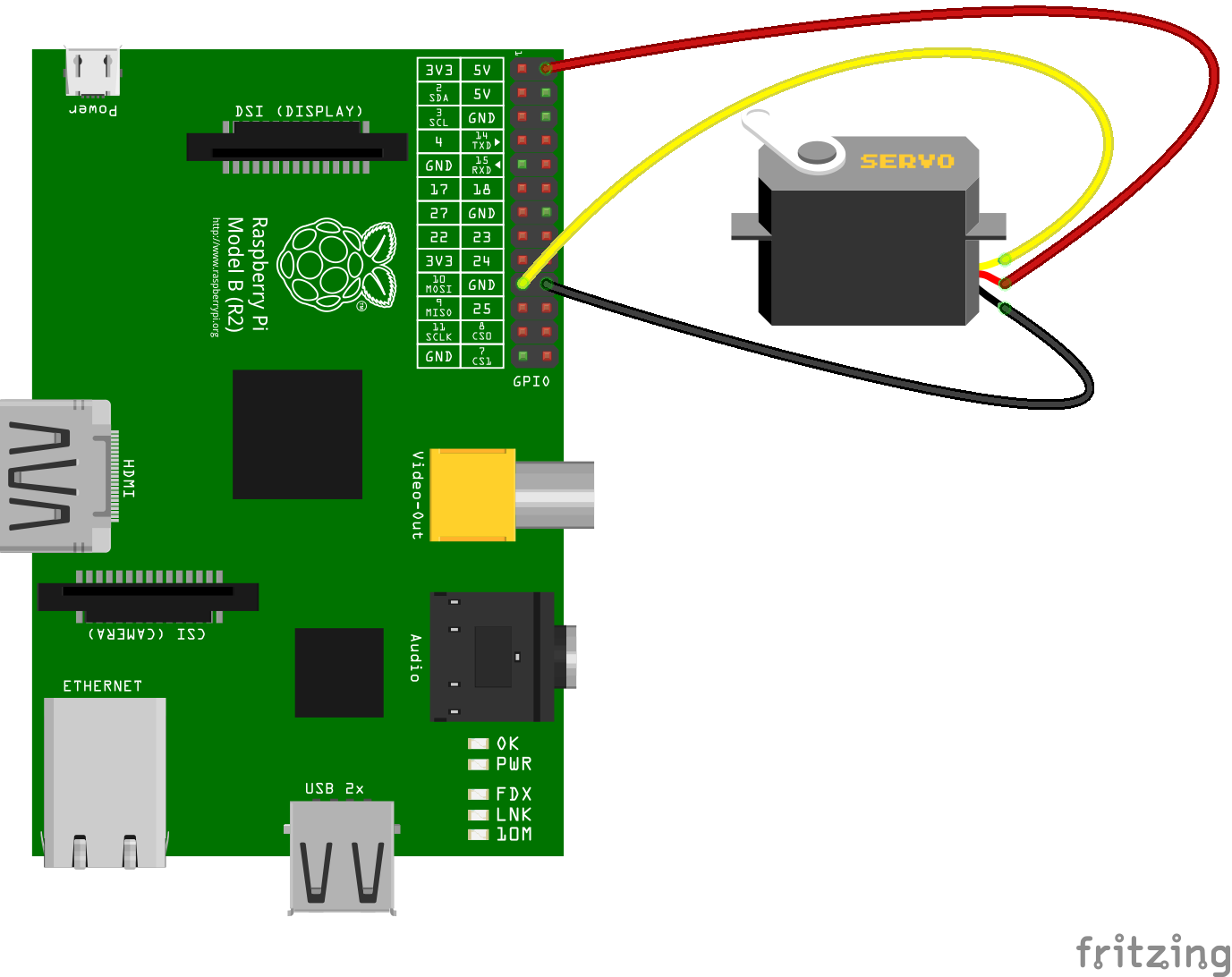
Pigpio Npm

Raspberry Gpio Learn Sparkfun Com

Software Adafruit S Raspberry Pi Lesson 8 Using A Servo Motor Adafruit Learning System
Q Tbn And9gcqm6 V4m4xibip7qsmqyg9v0rqjawzf4txhjgqcgzdf8v6t3 Fq Usqp Cau

Raspberry Pi 4 Gpio Pinout Raspberry Pi Maker Pro

Raspberry Pi Raspberry Pi Pwm Generation Using Python And C Ras
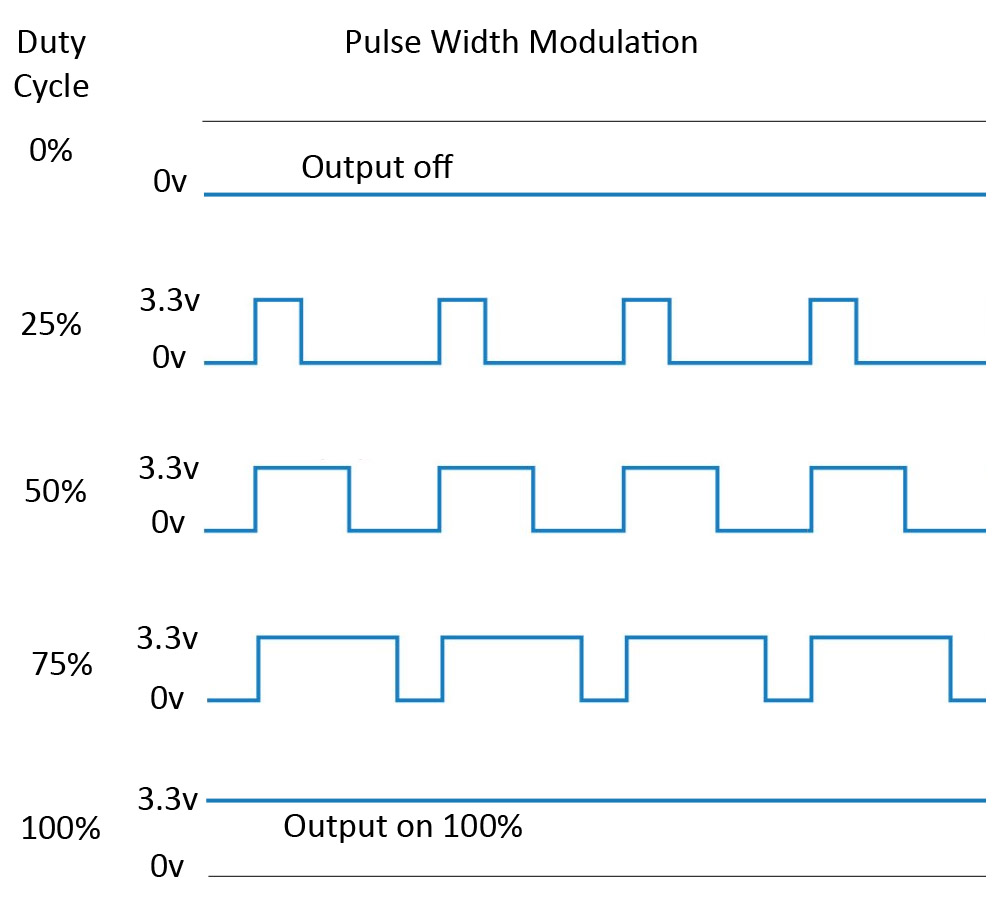
Pulse Width Modulation Pwm On The Raspberry Pi With Python Programming

Gpio Raspberry Pi Documentation

Raspberry Pi Fan Home Assistant Os Home Assistant Community

Raspberry Pi Analog Inputs And Pwm Youtube

Raspberry Pi Pwm Tutorial

Everything You Want To Know About Raspberry Pi Gpio But Were Afraid To Ask Circuits

5v 4 Pin Pwm Noctua x10 On Raspberry Pi Raspberry Pi Forums
1

Pi Zero Pwm Audio Adding Basic Audio Ouput To Raspberry Pi Zero Adafruit Learning System

How To Control A Dc Fan Using The Raspberry Pi
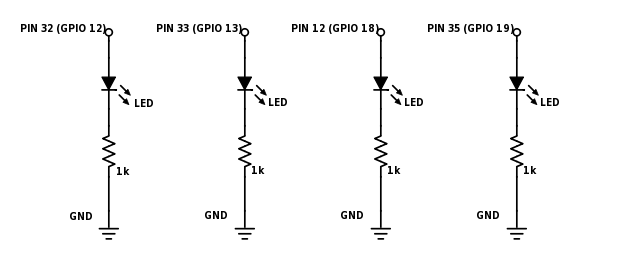
Raspberry Pi Pwm In Gpio Python Radish Logic

Raspberry Pi Pwm And Servo Motor Tutorial Microcontroller Tutorials
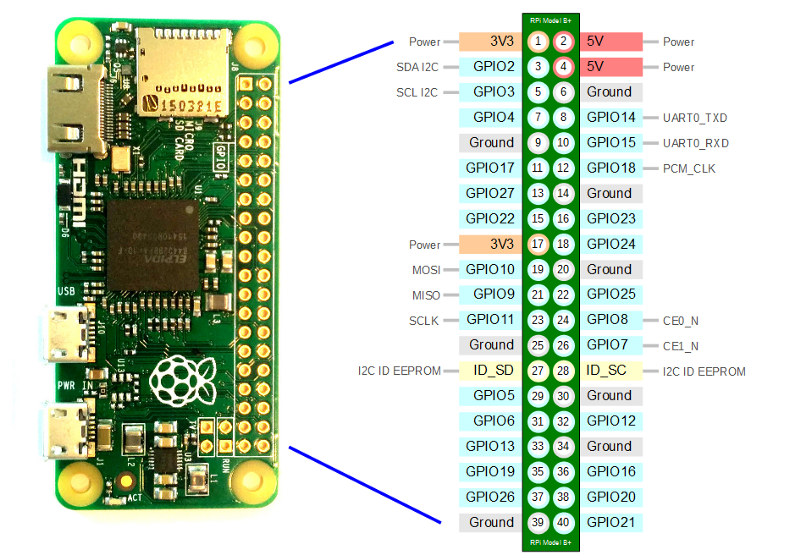
Controlling An External Led Using A Raspberry Pi And Gpio Pins

Software Pwm On The Raspberry Pi Gordons Projects

How To Use Gpios On Raspberry Pi Simple I O Pwm And Uart Semillero Advanced Digital Technologies Upb Bucaramanga Colombia

Controlling Speed Of Dc Fan With Pwm Raspberry Pi Forums

Raspberry Pi Raspberry Pi Pwm Generation Using Python And C Ras

Are Resistors Required For Builtin Pwm Fans Raspberry Pi Stack Exchange

Using Raspberry Pi To Control A Pwm Fan And Monitor Its Speed Driftkingtw S Blog

Gpio Pwm For Raspberry Pi H Bridge Dc Motor Control Bluetin Io

Raspberry Pi Linux Lesson 27 Pwm Output On Gpio Pins From Python Youtube

Rpi Gpio 0 5 2a Now Has Software Pwm How To Use It Raspi Tv
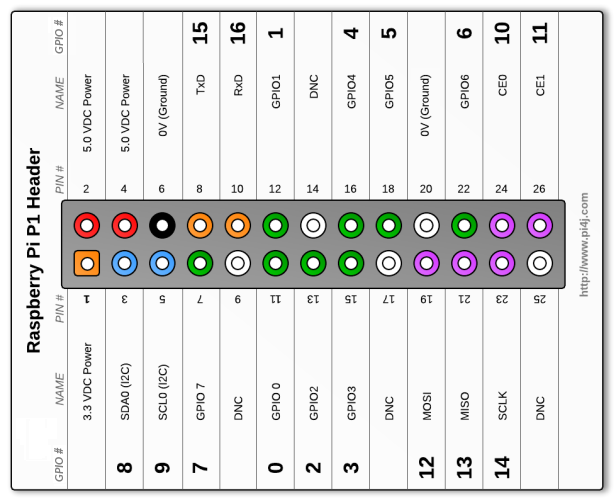
Bluej Led Tutorial

12 Use Of Raspberry Pi 3b Node Rpio Library Hardware Pwm Programmer Sought

Android Things Any Way To Pwm On Gpio Raspberry Pi Stack Exchange

Gpio C Library Tips For The Raspberry Pi

How To Control A Dc Fan Using The Raspberry Pi

Gpio Raspberry Pi Documentation

Pulse Width Modulation Pwm

Raspberry Pi Pwm Tutorial

Raspberry Pi Pwm Tutorial Control Brightness Of Led And Servo Motor

Raspberry Pi Simulink Driver Blocks Adc Dac Pwm File Exchange Matlab Central

Raspberry Pi 3 Pinout Features Specifications Datasheet

Dc Motor Speed Control With Raspberry Pi

Pwm Max Frequency Raspberry Pi Forums

Gpio Raspberry Pi Documentation
Pwm Output For 14 1 Dutycycle Left And 14 7 Dutycycle Right On Download Scientific Diagram

Pwm Adafruit S Raspberry Pi Lesson 9 Controlling A Dc Motor Adafruit Learning System
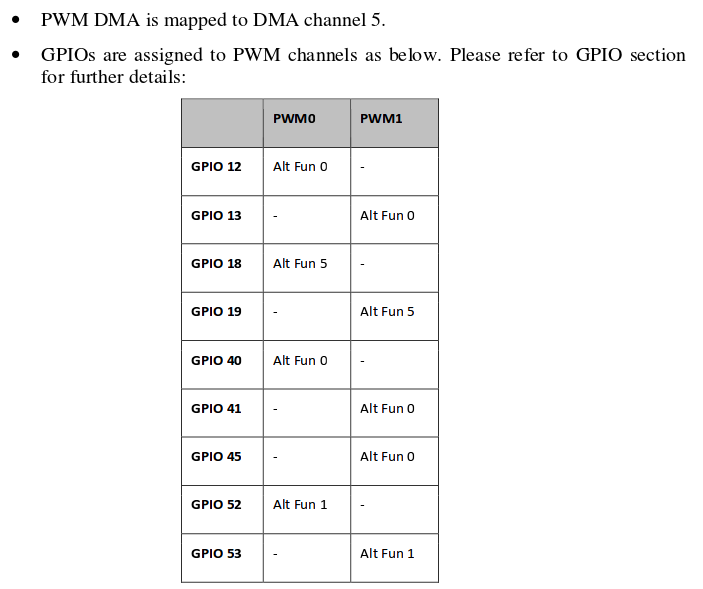
Rpi Pwm Wiki

Adding A 5v Fan To A Raspberry Pi 3 Model B And Having Control Of It Raspberry Pi Forums

Everything You Want To Know About Raspberry Pi Gpio But Were Afraid To Ask Circuits

Getting Started With Powershell Iot On Raspbian Raspberry Pi Darrenjrobinson Bespoke Identity And Access Management Solutions

Csc 299 Sophomore Lab In Applied Computing Hardware Projects For The Raspberry Pi

Using Fan On Pi Raspberry Pi Forums
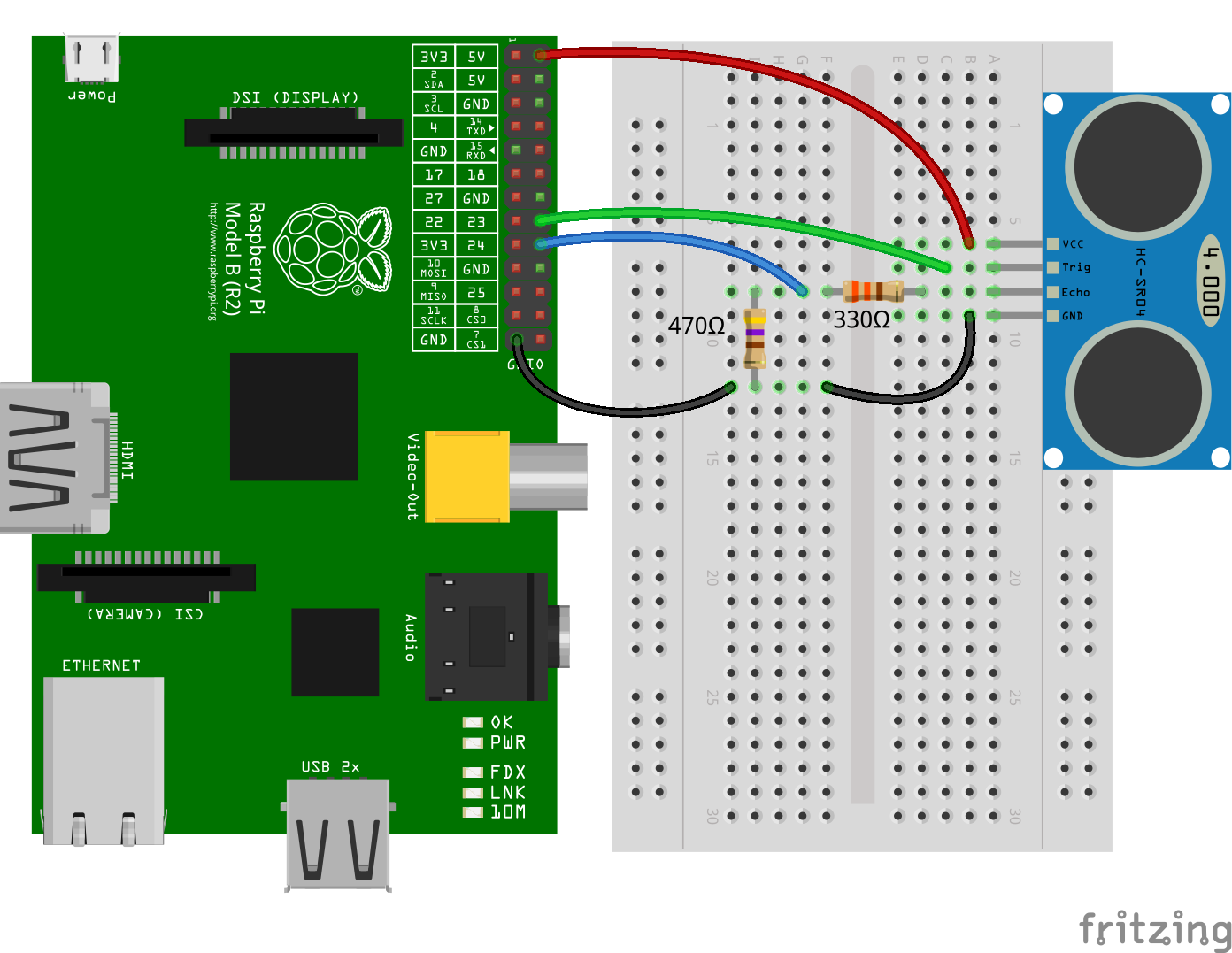
Pigpio Npm

Raspberry Pi Driving A Led Through A Mosfet Electrical Engineering Stack Exchange

Hardware Pwm With Raspberry Pi Zero Codecubix

Raspberry Gpio Learn Sparkfun Com

Gpio Pwm For Raspberry Pi H Bridge Dc Motor Control Bluetin Io

Run The Program In The Laptop And Use The Raspberry Gpios Pwm To Control Servos Raspberry Pi Stack Exchange

How To Control A Motor With The Raspberry Pi Tutorial Australia

Raspberry Pi Archives Tinkerboy
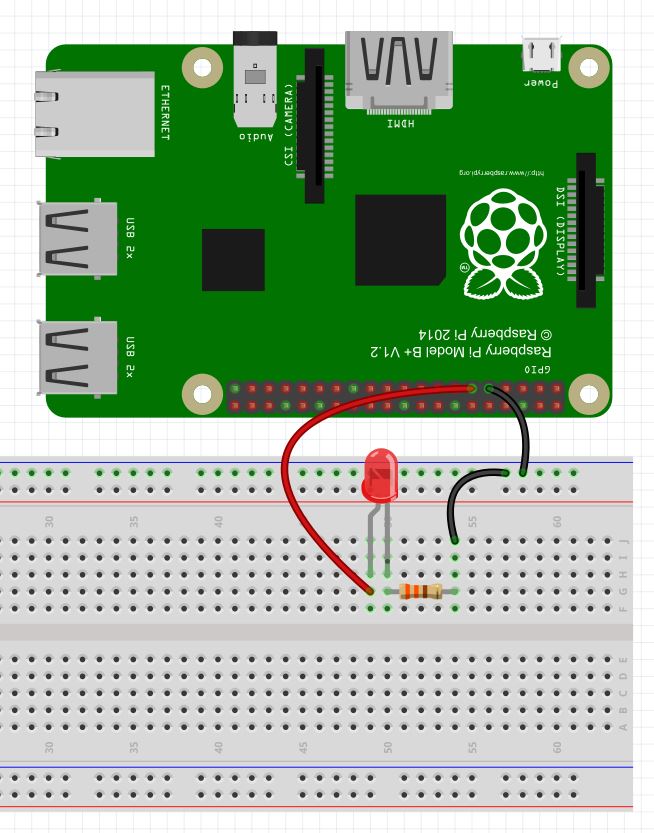
Raspberry Pi Lesson 27 Analog Voltages Using Gpio Pwm In Python Technology Tutorials

Gpio In Scratch 1 4 Raspberry Pi Documentation

How To Connect Speakers Onraspberry Pi Wh Through Pwm Raspberry Pi Stack Exchange

Gpio In Scratch 1 4 Raspberry Pi Documentation

How To Use Wiringpi2 For Python With Pull Ups Or Pull Downs And Pwm Pt 2 Raspi Tv

Raspberry Gpio Learn Sparkfun Com

Pwm Control On Raspberry Pi Raspberry Pi Stack Exchange

Using Raspberry Pi To Control A Pwm Fan And Monitor Its Speed Driftkingtw S Blog

How To Use Soft Pwm In Rpi Gpio 0 5 2a Pt 2 Led Dimming And Motor Speed Control Raspi Tv
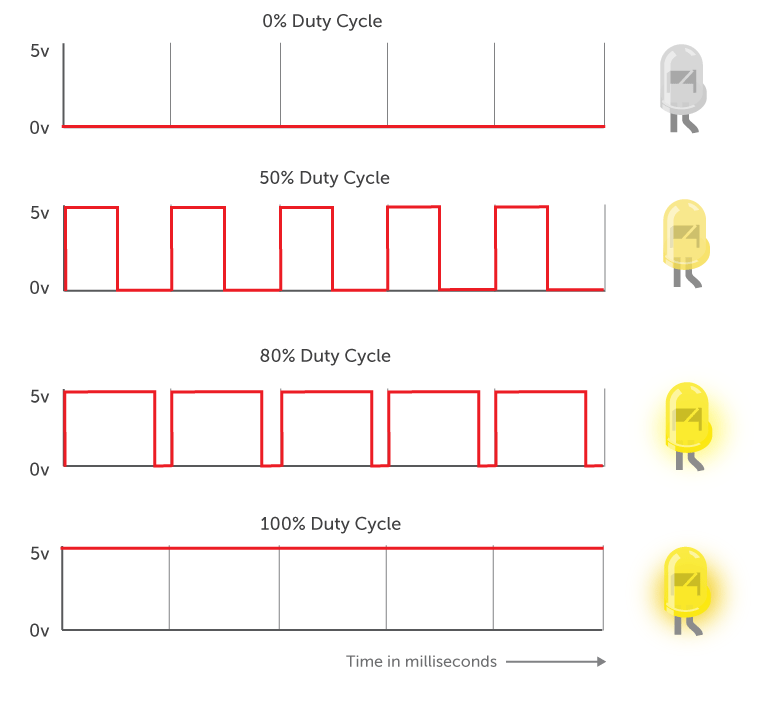
Building The Raspberry Pi Smart House Part Two Controlling Leds Pubnub

Raspberry Pi Pwm Driver Block Sfunction File Exchange Matlab Central

Analog Pwm Thinking Of Pi Raspberry Pi Tutorials

Raspberry Pi Dim Led With Pwm And Java Java Tutorial Network
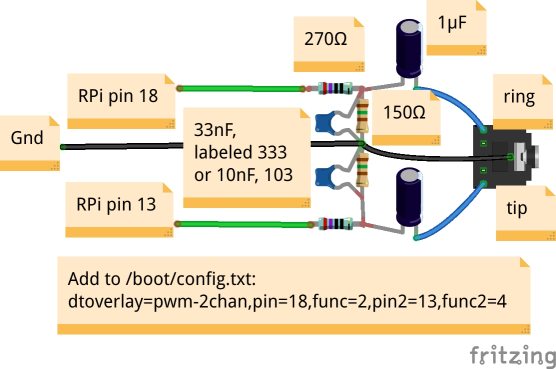
Audio Output From A Raspberry Pi Zero Shallow Thoughts

Python Programming Tutorial Getting Started With The Raspberry Pi Learn Sparkfun Com

Raspberry Pi Fan Control And Monitoring With Bash Domoticz

Pwm Control With The Raspberry Pi

Pwm Audio Guide Sudomod

Raspberry Pi Raspberry Pi Pwm Generation Using Python And C Ras

Raspberry Pi Gpio Pwm

Can T Get A Locally Connected Dht11 To Show Up Configuration Home Assistant Community
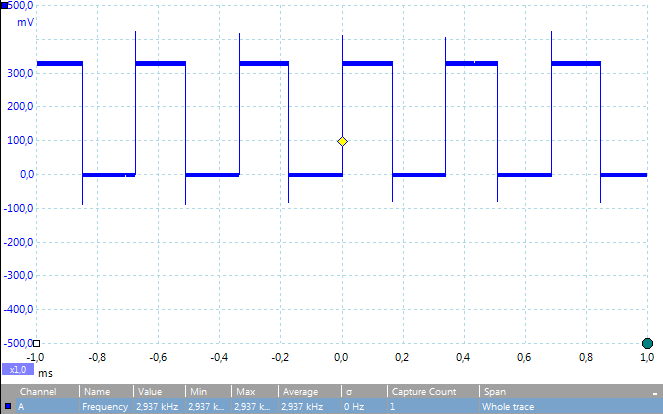
Benchmarking Raspberry Pi Gpio Speed Code And Life

05 Setting The Gpio Hardware Pwm Frequency On The Raspberry Pi Youtube
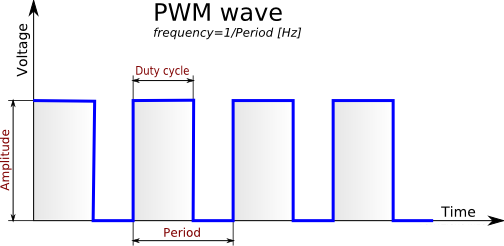
Hardware Pwm With Raspberry Pi Zero Codecubix

Amazon Com Servo Driver Hat Board For Raspberry Pi Zero Zero W Zero Wh 2b 3b 3b 16 Channel Servo Pwm Outputs With I2c Interface Used For Controlling Robotic Arm Or Hexapod Walker Computers Accessories

Software Pwm On Raspberry Pi Raspi Tv



